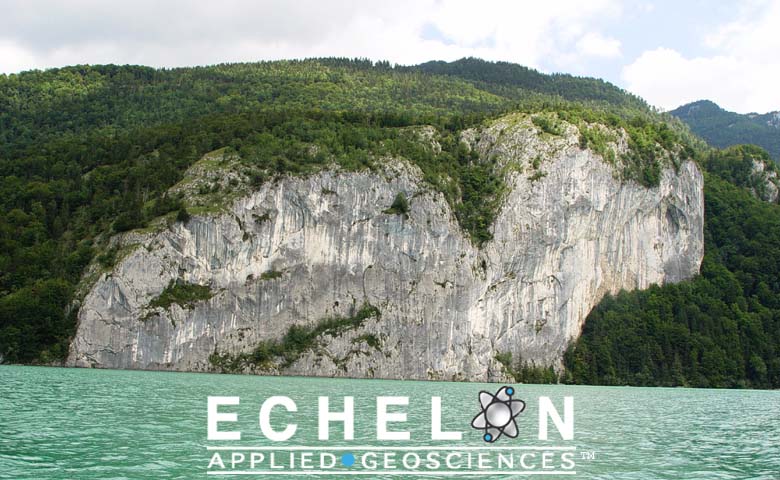| |
Two distinct processes on Earth produce hydrocarbon gas: microbial and thermogenic degradation of organic matter.
Microbial gas is formed at shallow depths and low temperatures by anaerobic bacterial decomposition of sedimentary organic
matter. In contrast, thermogenic gas is formed at deeper depths by: (1) thermal cracking of sedimentary organic matter into
hydrocarbon liquids and gas ("primary" thermogenic gas), and (2) thermal cracking of oil at high temperatures into gas
("secondary" thermogenic gas) and pyrobitumen.
Microbial gas is very dry (i.e., it consists almost entirely of methane). In contrast, thermogenic gas can be dry,
or can contain significant concentrations of "wet gas" components (ethane, propane, butanes) and condensate (C5+ hydrocarbons).
Although thermogenic gas is typically the dominant type of natural gas in coal and petroleum reservoirs, those reservoirs
often contain a component of microbial gas. Gas origin or source correlations are determined, in part, from geochemical
analysis of the gas, consideration of potential gas migration pathways, and evaluation of migration mechanisms from potential
sources (Baldassare, et.al., 2015).
Geochemical analysis of a gas includes both molecular composition (relative abundance in the gas sample of C1 to C6
hydrocarbons and non-hydrocarbon gases such as He, H2, CO2, and N2) and isotopic composition. The isotopic composition
of a gas includes characteristics such as the stable carbon and hydrogen isotope ratios of the C1 – C5 hydrocarbon gas species,
stable isotope composition of non-hydrocarbon gases, and radioactive carbon and hydrogen isotopes of C1. Data for molecular and
isotopic characteristics of a gas can be used to constrain the origin of a gas (bacterial and/or thermogenic) as well as
the type and maturity of the organic matter that generated the thermogenic hydrocarbons in a sample.
(Coleman et al., 1977; Schoell, 1980; Whiticar and Faber, 1986; Jenden et al., 1993; Laughrey and Baldassare, 1998;
Rowe and Muehlenbachs, 1999; Revesz et al., 2010; and Osborn and McIntosh, 2010, Baldassare, et.al., 2015). These data
can also identify any secondary processes, such as gas oxidation, that may have affected a sample. For baseline and incident
response groundwater quality programs, analysis of dissolved inorganic carbon (DIC) and other water geochemistry parameters
provide additional evidence of methane oxidation or degradation.
ECHELON has a proven expertise in the evaluation and interpretation of gas and groundwater geochemistry. We have developed
a comprehensive approach for stray gas incident response and investigations where gas and groundwater geochemistry
data are synthesized with other investigative information. The geochemistry data are evaluated and interpreted to
determine gas origin, thermal maturity, and secondary processes including mixing, oxidation and fractionation.
ECHELON's methodology has proven consistently successful in investigations to identify the origin and specific
source(s) of stray gas. ECHELON's approach, investigative and remediation techniques have been widely adopted
and applied by environmental consulting firms, and governmental agencies.
|
| |
ECHELON combines strontium (Sr) isotopic data with major and trace element geochemistry to characterize groundwater,
surface water, and produced water from various fossil fuel sources. Natural Sr isotope composition can be a sensitive
tool in the understanding of complex groundwater interactions and can be used to distinguish between inputs from deep
and shallow contamination sources, as well as between groundwater and mineralogically similar but stratigraphically distinct
rock units. ECHELON applies Sr isotopes to distinguish between natural and anthropogenic sources of major elements, as well
as the effects of mixing water from different sources.
In regions with shale gas drilling, Sr isotopes have been shown to differentiate deep gas-related fluids from
shallower fluids (e.g., shallow brines and coal mine drainage; Chapman et al., Geochemical and Strontium Isotope
Characterization of Produced Waters from Marcellus Shale Natural Gas Extraction , Environmental Science & Technology, 2012).
Additionally, ECHELON applies Sr isotopes to reveal subsurface water-rock interactions (Chapman et al., Strontium isotope
quantification of siderite, brine, and acid mine drainage contributions to abandoned gas well discharges in the Appalachian
Plateau, Applied Geochemistry, 2013).
|





